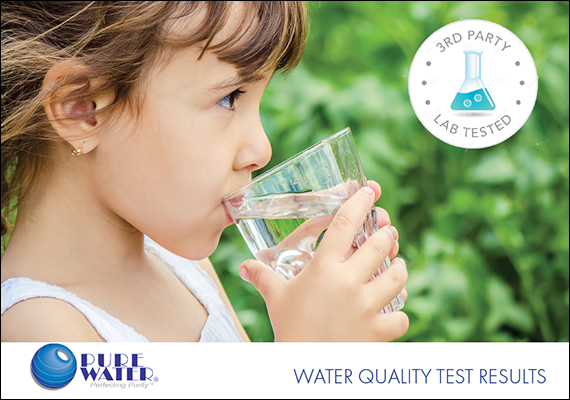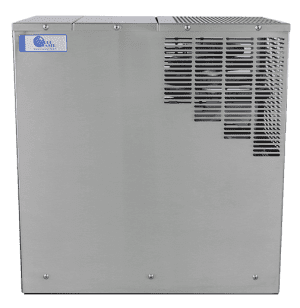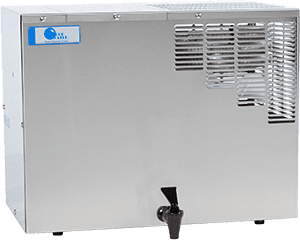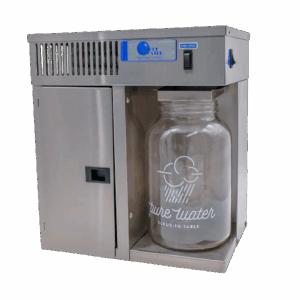Pure Water Distillers: The Best Water Distillers on the Market
For decades, we have been Perfecting Purity™, working diligently to produce the best water distillers on the market. We constantly strive to improve the quality of life for our customers by improving the quality of water.
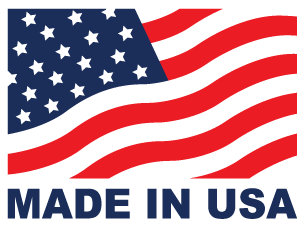
Made in the USA
Pure Water Distillers are made in the U.S.A.! We also offer the longest warranties in the industry. Moreover, our products are built to last and easy to maintain.
We’ve helped countless families worldwide get consistently safe water and have seen firsthand the life-changing effects of avoiding waterborne toxins and contaminants. We are committed to ensuring you, your families, and your businesses have fresh distilled water for years.
Why 3rd Party Testing is Important
The first step in ensuring that we provide you with the best water distiller is measuring the effectiveness of our systems, and we chose to work with 3rd party laboratories to ensure there is no bias in our measurements.
Over the years, as we got test results back, we have tweaked our designs to ensure ever better quality. Every detail is optimized. From using high-grade USA stainless steel to sourcing the best activated carbon for our sewn (never glued) filters for our Mini Classic, every component is carefully chosen because you deserve only the best.
Looking for a specific contaminant and removal rate? We’ve sorted the test results for Pure Water brand automatic distillers into categories below.
Removal of Biological Contaminants
Microbiological Contaminants are a group of living organisms that can be found in water supplies. Such contaminants can be the cause of illness in humans that consume drinking water containing these contaminants.
| Organism | Raw Water Concentration | Product Water Concentration | Removal Efficiency | Action Level | Test Method |
|---|---|---|---|---|---|
| Bacillus subtilis | 1 x 108 CFU/ML | None Detected | 99.9% | 10 CFU/ML | NSF Std 62, Annex C |
Bacillus subtilis is used as a surrogate indicator. The removal of bacillus subtilis spores is generally recognized as an indicator of the removal of the following biological contaminants from water: K. terrigena (bacteria), the Polio and Rota viruses, Giardia Protozoa, and Cryptosporidia Protozoa.
Removal of Inorganic Contaminants
Inorganic contaminants are heavy metals, chemicals, and compounds which do not incorporate a carbon atom in their molecular structure. While relatively few in number, some inorganic contaminants have a high toxicity and can be found in many water supplies. The most toxic inorganic contaminants – such as lead – are regulated by the US EPA.
| Inorganic Chemical | Feed Water Concentration (ppm) | Product Water After Treatment (ppm) | Percent % Reduction |
|---|---|---|---|
| Antimony | 0.195 | 0 | >99.9% |
| Arsenic | 0.25 | 0 | >99.9% |
| Barium | 0.07 | 0 | >99.9% |
| Beryllium | 0.19 | 0 | >99.9% |
| Boron | 0.285 | 0 | >99.9% |
| Cadmium | 0.168 | 0 | >99.9% |
| Calcium | 44.65 | 0.48 | 98.9% |
| Chloride | 84 | 0 | >99.9% |
| Chlorine | 1.55 | 0 | >99.9% |
| Chromium | 0.185 | 0 | >99.9% |
| Cobalt | 0.18 | 0 | >99.9% |
| Copper | 0.19 | 0 | >99.9% |
| Fluoride | 3.7 | 0 | >99.9% |
| Hardness | 147.15 | 1.3 | 99.12% |
| Iron | 0.21 | 0 | >99.9% |
| Lead | 0.165 | 0 | >99.9% |
| Magnesium | 15.1 | 0.25 | 99.8% |
| Manganese | 0.175 | 0 | >99.9% |
| Mercury | 0.0222 | 0 | >99.9% |
| Nickel | 0.18 | 0 | >99.9% |
| Nitrate | 31.65 | 0 | >99.9% |
| Phosphorous | 0.2 | 0 | >99.9% |
| Potassium | 8.185 | 0 | >99.9% |
| Selenium | 0.27 | 0 | >99.9% |
| Sodium | 82.8 | 0.02 | 99.9% |
| Thallium | 0.19 | 0 | >99.9% |
| Vanadium | 0.195 | 0 | >99.9% |
| Zinc | 0.09 | 0 | >99.9% |
Removal of Radioactive Contaminants
Radioactive contaminants include impurities like plutonium, uranium, and strontium 90. Many people don’t realize that this contamination doesn’t just come from countries dumping radioactive waste; some radioactive contaminants, like uranium, often contaminate water naturally.
| Radioactive Contaminant | Feed Water Concentration | Product Water After Treatment | Percent % Reduction |
|---|---|---|---|
| Uranium | 40.5 ± 3.19 pCi/L ± Error | 0.000 ± 0.562 pCi/L ± Error | >99% |
| Cesium | 178.9 ppb | 0.4 ppb | 99.8% |
Related: Visit Our Water Quality Articles
Removal of Organic Contaminants
Organic compounds contain a carbon atom in their chemicals structure. This group consists of thousands of different entities, many derived from the petrochemical industry. Common organic contaminants include cleaners, herbicides, pesticides, and industrial process wastes.
Because herbicide and pesticide contamination is such a common concern, we’ve grouped those in a separate chart below this one of other organic contaminants:
| Organic Chemical | Feed Water Concentration (ppb) | Product Water After Treatment (ppb) | Percent % Reduction |
|---|---|---|---|
| PFOA | 26 | 0 | >99.9% |
| PFOS | 7 | 0 | >99.9% |
| Phenol | 18 | 0 | >99.9% |
| Phenol | 18 | 0 | >99.9% |
| 2-chlorophenol | 14.5 | 0 | >99.9% |
| 2-nitrophenol | 11 | 0 | >99.9% |
| 2,4-dichlorophenol | 12.5 | 0 | >99.9% |
| 4-chloro-3-methylphenol | 57.5 | 0 | >99.9% |
| 2,4,6-trichlorophenol | 32 | 0 | >99.9% |
| 2,4-dinitrophenol | 135.5 | 0 | >99.9% |
| Pentachlorophenol | 72 | 0 | >99.9% |
| Naphthalene | 13 | 0 | >99.9% |
| 4-nitrophenol | 82.5 | 0 | >99.9% |
| Benzene | 9 | 0 | >99.9% |
| Bromobenzene | 9 | 0 | >99.9% |
| Bromochloromethane | 10.5 | 0 | >99.9% |
| Bromodichloromethane | 31.5 | 0 | >99.9% |
| Bromoform | 12.5 | 0 | >99.9% |
| n-Butylbenzene | 6.5 | 0 | >99.9% |
| sec-Butylbenzene | 6.5 | 0 | >99.9% |
| tert-Butylbenzene | 7.5 | 0 | >99.9% |
| Carbon tetrachloride | 6.5 | 0 | >99.9% |
| Chlorobenzene | 9 | 0 | >99.9% |
| Chlorodibromomethane | 25.5 | 0 | >99.9% |
| Chloroform | 575 | 0 | >99.9% |
| 2-chlorotoluene | 8.5 | 0 | >99.9% |
| 4-chlorotoluene | 8.5 | 0 | >99.9% |
| 1,2-Dibromo-3-chloropropane | 71.5 | 0 | >99.9% |
| 1,2-Dibromomethane | 11.5 | 0 | >99.9% |
| Dibromomethane | 6.5 | 0 | >99.9% |
| 1,2-Dichlorobenzene | 17.5 | 0 | >99.9% |
| 1,3-Dichlorobenzene | 16.5 | 0 | >99.9% |
| 1,4-Dichlorobenzene | 16.5 | 0 | >99.9% |
| 1,1-Dichloroethane | 10 | 0 | >99.9% |
| 1,2-Dichloroethane | 11.15 | 0 | >99.9% |
| 1,1-Dichloroethene | 4 | 0 | >99.9% |
| cis-1,2-Dichloroethene | 6.5 | 0 | >99.9% |
| trans-1,2-Dichloroethene | 10 | 0 | >99.9% |
| 1,2-Dichloropropane | 8 | 0 | >99.9% |
| 1,3-Dichloropropane | 11 | 0 | >99.9% |
| 1,1-Dichloropropene | 7.5 | 0 | >99.9% |
| cis-1,3-Dichloropropane | 8.5 | 0 | >99.9% |
| trans-1,3-dichloropropene | 9.5 | 0 | >99.9% |
| Ethylbenzene | 8.5 | 0 | >99.9% |
| Hexachlorobutadiene | 12.5 | 0 | >99.9% |
| Isopropylbenzene | 7.5 | 0 | >99.9% |
| p-Isopropyltoluene | 9 | 0 | >99.9% |
| Methylene chloride | 60000 | 5.5 | >99.9% |
| Naphthalene | 15.5 | 0 | >99.9% |
| n-Propylbenzene | 6.5 | 0 | >99.9% |
| Styrene | 1.95 | 0 | >99.9% |
| 1,1,2,2-Tetrachloroethane | 10.5 | 0 | >99.9% |
| 1,1,1,2-Tetrachloroethane | 9.5 | 0 | >99.9% |
| Tetrachloroethene | 7 | 0 | >99.9% |
| Toluene | 8.5 | 0 | >99.9% |
| 1,2,3-Tricholorobenzene | 7.5 | 0 | >99.9% |
| 1,2,4Tricholorobenzene | 13.5 | 0 | >99.9% |
| 1,1,1-Trichloroethane | 10.3 | 0 | >99.9% |
| 1,1,2-Tricholorethane | 11 | 0 | >99.9% |
| Trichloroethene | 7.5 | 0 | >99.9% |
| 1,2,3-Tricholoropropane | 11.5 | 0 | >99.9% |
| 1,2,4-Trimethylbenzene | 8 | 0 | >99.9% |
| 1,3,5-Trimethylbenzene | 7.5 | 0 | >99.9% |
| o-Xylene | 26.5 | 0 | >99.9% |
Removal of Herbicides and Pesticides
Any chemical in a category that ends in the word “cide” – as in pestiCIDE, herbiCIDE, insectiCIDE, and fungiCIDE – are chemicals that are specifically designed to kill things and are intentionally designed to be toxic.
Herbicides are designed to kill weeds. Pesticides and insecticides are designed to kill insects, mites and other bugs. Fungicides are designed to kill fungus. Et cetera.
Many of these chemicals are heavily regulated because of the detrimental health effects they cause from extreme or sustained exposure.
| Herbicides and Pesticides | Feed Water Concentration Mg/L (ppb) | Product Water After Treatment Mg/L (ppb) | Percent % Reduction |
|---|---|---|---|
| Acetachlor | 1.95 | 0 | >99.9% |
| Alachor | 1.85 | 0 | >99.9% |
| Ametryn | 1.9 | 0 | >99.9% |
| Butylate | 2.05 | 0 | >99.9% |
| Cyanazine | 1.95 | 0 | >99.9% |
| Deethylatrazine | 1.55 | 0 | >99.9% |
| Deisopropylatrazine | 0.7 | 0 | >99.9% |
| EPTC | 1.9 | 0 | >99.9% |
| Ethalfluralin | 1.7 | 0 | >99.9% |
| Fonofos | 0.7 | 0 | >99.9% |
| Glyphosate | 185.8 | 0 | >99.9% |
| Metolachlor | 1.95 | 0 | >99.9% |
| Metribuzin | 1.85 | 0 | >99.9% |
| Pendimethalin | 1.85 | 0 | >99.9% |
| Propachlor | 1.65 | 0 | >99.9% |
| Prometon | 1.8 | 0 | >99.9% |
| Prometryn | 1.9 | 0 | >99.9% |
| Propazine | 1.9 | 0 | >99.9% |
| Simazine | 1.85 | 0 | >99.9% |
| Triallate | 1.8 | 0 | >99.9% |
| Trifluralin | 1.95 | 0 | >99.9% |
| 2,4-D | 11 | 0 | >99.9% |
| 2,4-DB | 10.5 | 0 | >99.9% |
| 2,4,5-T | 10.5 | 0 | >99.9% |
| 2,4,5-TP | 10 | 0 | >99.9% |
| Dicamba | 10.5 | 0 | >99.9% |
| Pentachlorophenol | 60.3 | 0 | >99.9% |
| MCPA | 10 | 0 | >99.9% |
| MCPB | 11.5 | 0 | >99.9% |
| MCPP | 10.5 | 0 | >99.9% |
| Picloram | 11 | 0 | >99.9% |
| Trichlopyr | 11 | 0 | >99.9% |
Browse Our Home Water Distillers
Questions?
Do you have any additional questions? Please email us at info@MyPureWater.com.
Appendix of Units
- CFU/ML = Colony forming unit/milliliter (used for reporting bacteria results)
- Mg/L = Milligram / Liter = ppm
- ppm = parts per million = Mg/L
- μg/L = Microgram/Liter = ppb
- ppb = parts per billion = μg/L
- Mg/L and μg/L are the units primarily used in reporting results for water analysis.
Methodology Used
This page is a compilation of testing performed at various 3rd party laboratories including the University of Nebraska – Lincoln’s Water Sciences Laboratory, Midwest Laboratories, FGL Environmental, and Harris Laboratories, Inc.
All Pure Water distillation systems were installed in accordance with manufacturers instructions in accordance of Owners Manuals.
For details on methodology of a specific test for a certain contaminant, please contact us at info@MyPureWater.com.
Note: the contaminants listed in these tests are not necessarily present in the drinking water of the reader.

